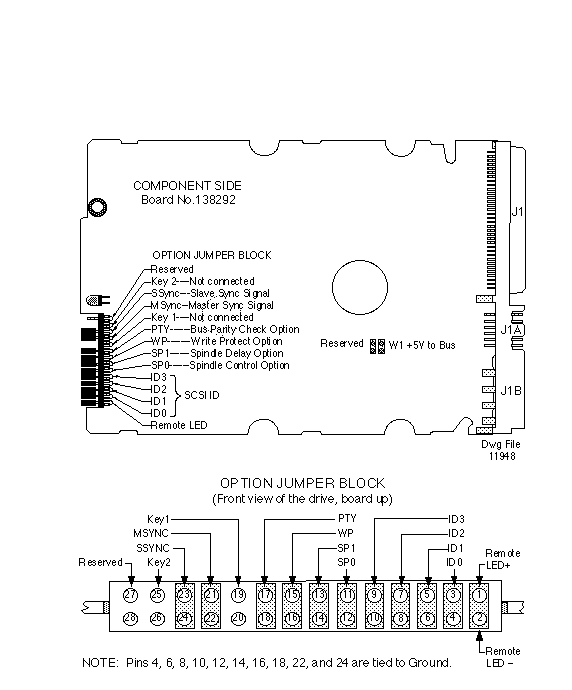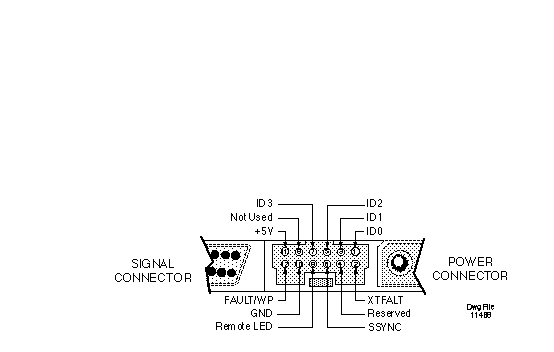Configuration and Jumper Options

- SCSI ID Selection
- Up to sixteen devices (the host and fifteen targets) can be attached to the SCSI bus. These are selected with jumpers on the Option Jumper Block or on Auxiliary Connector J1A (use either but not both); see the Note below the J1A drawing for J1A usage. In multiple-device systems, each device must have its own Unique SCSI ID. The SCSI ID (drive address) jumpers are identified as ID0, ID1, ID2, and ID3. ID selection is binary, as shown below.
SCSI ID ID3 ID2 ID1 ID0
0 (Default) out out out out 1 out out out in 2 out out in out 3 out out in in 4 out in out out 5 out in out in 6 out in in out 7 out in in in 8 in out out out 9 in out out in 10 in out in out 11 in out in in 12 in in out out 13 in in out in 14 in in in out 15 in in in in
- Interface Termination
An external terminator provides termination for the interface lines.
Suggested end-of-cable terminator: Methode DS2050-01-68D
- Terminator Power
If a jumper is installed at W1 (Default), the drive provides terminator power (TERMPWR) to the bus.
If the jumper is omitted, the host system provides TERMPWR.
- Remote LED
A user-supplied LED may be connected to Remote LED (Pins 1 and 2).
- Spindle Options
Jumpers at SP0 (Pins 11 and 12) and SP1 (Pins 13 and 14) control the spindle options.
- Terminator Power
SP0 SP1
N N The drive starts the spindle motor at power-on. (Default) Y N The drive waits for a Start Unit SCSI command to start the spindle motor. N Y Spindle start-up is delayed based on SCSI ID address (12 seconds per ID)
- Write Protect
A jumper at WP (Pins 15 and 16) selects the write protect option.
Jumper The drive is write protected. No Jumper The drive is not write protected. (Default)
- Parity
A jumper at PTY (Pins 17 and 18) selects the bus parity check option. The drive always generates parity regardless of this option.
Jumper SCSI interface parity checking disabled. No Jumper SCSI interface parity checking on. (Default)
- Spindle Sync Signals
Use of the MSYNC and SSYNC signals is optional. These signals are used as spindle synchronization reference.
